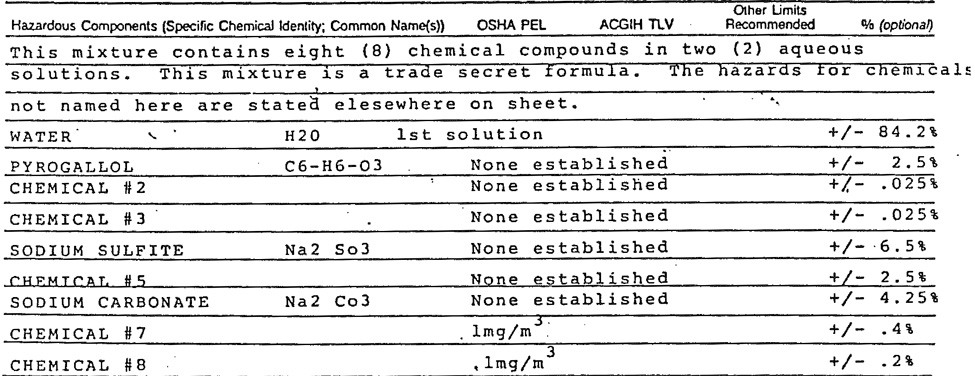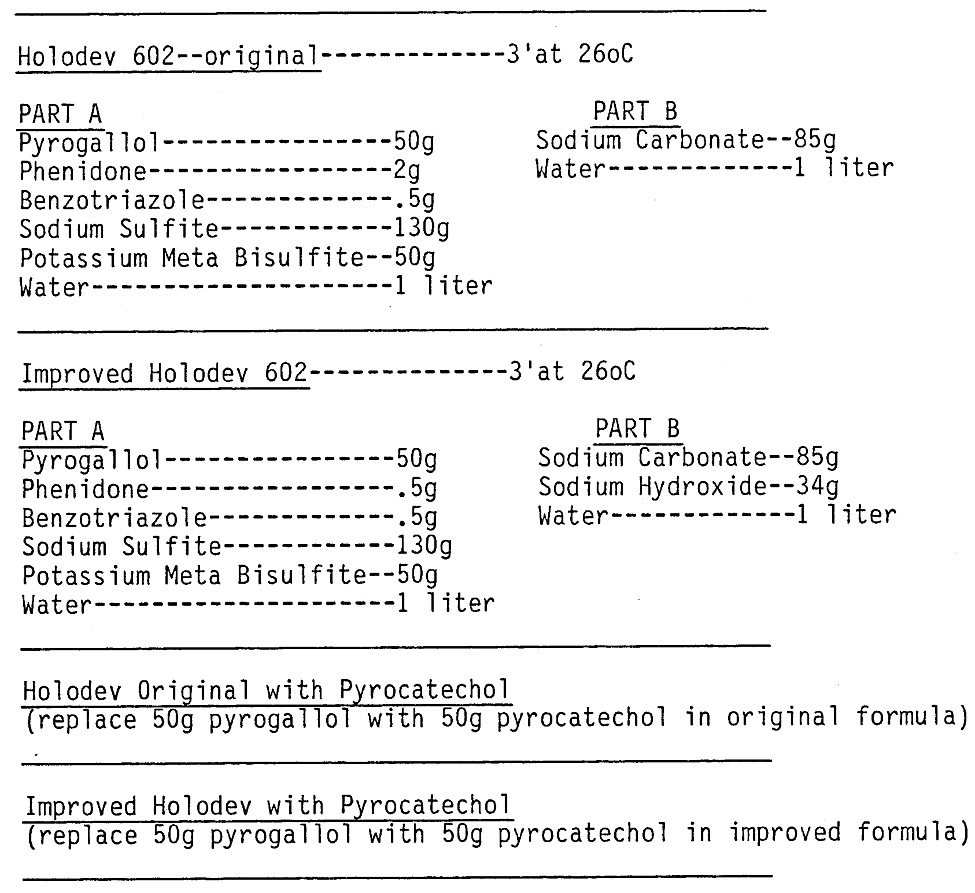
"Holodeveloper 602 was given to us by Hans Bjelhaugen from Lasergruppen Holovision AB, Stockholm, Sweden. It is a developer for reflection holograms in particular made using Agfa Holotest 8 E7 5HD material. The developer works well for Denisyuk type reflection holograms using both He-Ne or Krypton CW lasers or pulsed ruby lasers. The exposure depends on the laser used but is around 100 uJ/cm². HD-602 works very well giving a high signal-to-noise ratio and high diffraction efficiency. The developer is completely stable as long as Part A and Part B are not mixed, and remains stable after being mixed for several weeks. One liter of mixed developer can be used to do 100 4x5 plates." From the Photographers Formulary web site page, HD-602 Holodeveloper.
Here are links to the Technical Notes and the MSDS Sheets for the developer as archived on this site, just in case the above link to HD-602 is not working, because sooner or later this product is bound to be discontinued, as there probably are not that many holographers out there willing to pay over $40 for 3 liters of working solution, especially since the same results can be acheived more inexpensively using the Pyrochrome process, which uses only 10 grams of pyrogallol per Part A, and nothing else.
So what else is in Holodev 602 besides pyrogallol? Here is a close up of its MSDS sheet:

So what are the Chemicals #'s 2, 3, & 5? Here is the answer, from an in-house report done at Northwestern University in 1986 comparing developers for single beam reflection holograms shot with a pulsed ruby laser.

"Mix 1 PART A + 1 PART B + 1 part deionized water. Use at a temperature of 80F (20C) for better and faster penetration
into the emulsion. Development time: 1 1/2 - 2 minutes." From the Photographers Formulary Technical Notes, which deviates from the above in the timing, but has a miscalculation, as 80F translates to 26.666..., almost 27C but certainly not 20C. At Northwestern, Parts A and B were not further diluted with an equal part of water. As usual, test for the optimal time of development and exposure for your batch of materials.
Chemicals #7 & #8 on the MSDS Sheet are potassium dichromate and either sodium bisulfate or sulfuric acid, the former forming the latter when dissolved in H2O to make the well-known silver solvent reversal bleach known colloquially as "PyroChrome" Bleach.